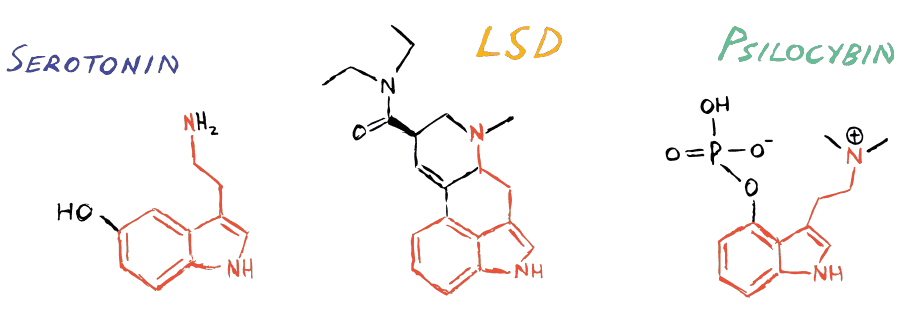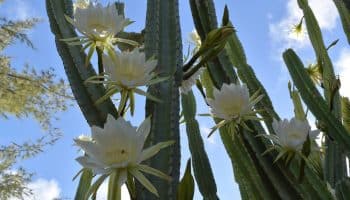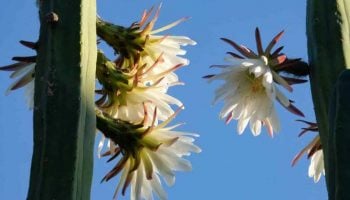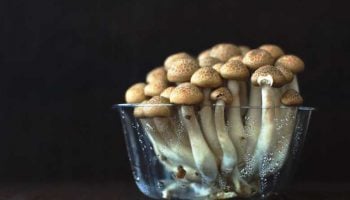The Ultimate Guide to
Microdosing
Mescaline
Buttons, Cactus, Mesc, Peyoto,
Mescaline is an illegal substance in many countries, and we do not encourage or condone its use where it is against the law. This guide is designed to ensure the safety of those who decide to use mescaline legally.
Overview
01Mescaline is a naturally occurring psychoactive alkaloid that is the main psychedelic compound in a range of psychedelic cacti native to the Americas, including peyote, San Pedro, and Peruvian Torch. In its natural state, mescaline has been used in Native American religious and shamanic ceremonies for thousands of years.
Though it’s not as prevalent today, mescaline was also the first psychedelic to enter mainstream Western culture—before the widespread use of LSD and psilocybin. More recently, the extracted compound has shown promise in the medical and psychotherapeutic treatment of substance abuse and depression, among other conditions.
To learn more about mescaline, read our Essential Guide to Mescaline.
Master the Skill of Microdosing
Enter your info to start your journey on Third Wave's Microdosing Course! Discover a science-based framework for transformational microdosing.
"The course gave me hope, a new way from what I've read and researched before. It has content which any reader can relate to whether you're an addict, an alcoholic or someone suffering from depression or other mental or spiritual ailments. I now feel empowered to take responsibility for my life!"
-Melissa P.
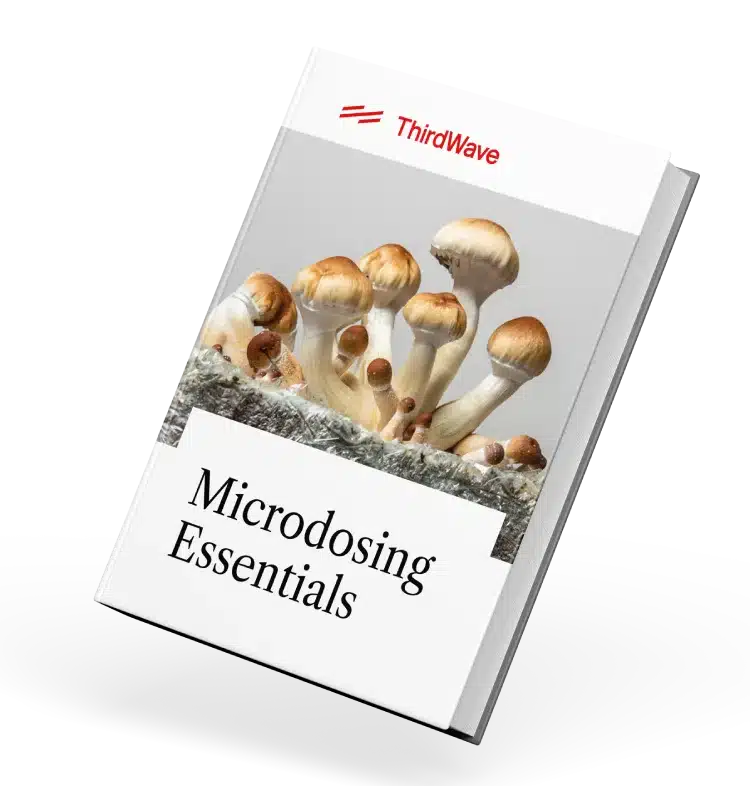

Master the Skill of Microdosing
Enter your info to start your journey on Third Wave's Microdosing Course! Discover a science-based framework for transformational microdosing.
"The course gave me hope, a new way from what I've read and researched before. It has content which any reader can relate to whether you're an addict, an alcoholic or someone suffering from depression or other mental or spiritual ailments. I now feel empowered to take responsibility for my life!"
-Melissa P.
Experience
02How to microdose with mescaline
Mescaline is available in a variety of forms, including raw/dried cactus preparations and extracted mescaline salts. As a general rule for microdosing, 1-2 mg of mescaline is approximately equivalent to 1 µg (microgram) of LSD.[1] An effective microdose, then, falls somewhere between 10-40 mg for most people, although some people have reported using upwards of 50 mg in some preparations.
The amount of the compound in any given form will depend on a number of factors, which can make it difficult to calculate your dosage. As a rough estimate, though, here’s a guide for how much of a given preparation is likely to contain a 10 mg microdose of mescaline, which you can scale up (or down) based on your own experience:
- Pure mescaline (freebase): 10 mg
- Mescaline hydrochloride: 11.7 mg [2]
- Mescaline sulfate: 13.2 mg [2]
- Peyote
- Peruvian torch
- San Pedro
Mescaline salts and freebase
Mescaline salts (hydrochloride, sulfate, citrate, acetate, etc.) and freebase are the most reliable way to microdose but can be difficult to obtain. Since whole cactus preparations contain unpredictable amounts of mescaline—not to mention other alkaloids—they can’t always guarantee consistent microdoses.
Mescaline salts often look like translucent crystals, waxy white clumps, or light-colored powders. The easiest way to consume them is to swallow them with fruit juice or water. They can also be placed into capsules or “bombed” (wrapped in cigarette papers and swallowed) to help mask the taste.
For optimal shelf life (potentially years), mescaline salts should be stored in an airtight container in the freezer, or at least somewhere cool, dark, and dry.[8]
Whole cactus
Whole cactus preparations are less reliable for consistent microdosing, but some feel that their natural balance of alkaloids comes with some advantages. Many cactus species contain mescaline, but the best known and most widely available are peyote (Lophophora williamsii), Peruvian torch (Echinopsis/Trichocereus peruviana), and San Pedro (Echinopsis/Trichocereus pachanoi). A whole cactus preparation can be consumed either fresh, dried, as a powder, or as a “tea.”
Fresh
It’s possible to microdose mescaline by chewing on fresh, raw peyote, Peruvian torch, or San Pedro cactus, but the taste can be off-putting. If you do go for this method, you’ll want to keep the dark outer layer on as this is where most of the mescaline is found. Just be sure to remove the spines!
You can store fresh cactus in the freezer for months and even years, and doing so may increase the bioavailability of the alkaloids.[9][10] It’s best to cut it into portions first, though, since freezing tends to rupture cell walls and your cactus might end up thawing into sludge when it comes out of the freezer.[10][11]
Dried
An alternative is to dry peyote, Peruvian torch, or San Pedro cactus pieces (the thinner the better) in the sun, an oven, a dehydrator, or on a surface in front of a fan.[12][13] This should increase their shelf-life and stability whether kept in the freezer or not, as long as they’re kept somewhere cool, dark, and dry.
If using Peruvian torch and San Pedro, it’s best to remove the woody core beforehand—it adds to the drying time and contains little to no mescaline.[14]
If drying in the oven, keep the temperature low to avoid charring and the door open to release the steam.[15][16] How long it takes will depend on the size of your cactus pieces, among other factors—but whatever method you use, the aim is to make them as hard and brittle as possible, as well as totally dry throughout.
Powder
Dried cactus can also be crushed or ground to a fine powder. And this may actually be the ideal way to ingest a full spectrum of alkaloids, as opposed to mescaline alone.
Using peyote, Peruvian torch, or San Pedro cactus powder for your microdose also ensures even distribution of mescaline, as your dose can easily be packed into capsules. Mescaline is a very stable compound, so your peyote or San Pedro cactus powder can be indefinitely stored in an air-tight container in a cool, dark, and dry place.
“Tea”
It’s also possible to pulp or juice Peruvian torch, peyote or San Pedro cactus, or boil it into a brew, adding honey or sweeteners to taste.
You’ll probably need to experiment a bit to find a microdose that works for you with this method. Use the fresh and dried dosages given above as a general guide.
As with fresh and dried cactus, liquid preparations can be stored in the freezer in single-serving microdose portions. They don’t need to be thawed before being consumed. [17]
San Pedro-derived mescaline tea is one of our favorite microdosing options because it stores well, is easy on the stomach, and can taste great depending on how you prepare it. Learn how to brew your own tea in our San Pedro preparation guide.
Resin/whole cactus extract
The tea can also be evaporated to leave a concentrated resin extract, which again provides a full spectrum of alkaloids as opposed to just mescaline alone.[18]
The resin can be scraped into capsules and consumed the same as powder, dosed according to how much cactus was used.[9] We don’t encourage breaking the law, but if you live in a place where it’s legal, guides like this can run you through the process.
Do you want to dive deeper into the various mescaline ingestion methods? Check out our comprehensive guide to consuming San Pedro to choose a formula that works for you.
What schedule should I follow?
Experts in this area suggest different microdosing regimens, but our microdosing course follows James Fadiman’s system. Fadiman recommends taking a microdose once every three days: Take a microdose on Day 1. Then, do not take a microdose on Day 2 or Day 3. On Day 4, take another microdose.

Continue this process for several weeks.
Paul Stamets recommends a different microdosing protocol—though his method is specifically for psilocybin. He suggests taking a microdose every day for five days, then taking two days off to avoid building up a tolerance.
For most people, morning is the best time because the beneficial effects will last throughout the day without interfering with sleep. It’s also helpful to take daily notes in a journal to observe the effects throughout this process and adjust accordingly—or just notice the positive effects.
It’s also important to follow your usual routine while microdosing. The purpose is to enhance your day-to-day existence by integrating microdoses into your routine, so don’t change what you normally do. However, when you try microdosing for the first time, take a day off from work and social commitments. This will give you a chance to notice any unusual effects before microdosing in a more public situation.
While it may seem like you would only feel the effects of the microdose on the days you actually take it, try to observe the effect on the two days between doses, too. Many people perceive increased feelings of flow, creativity, and energy the day after they microdose in addition to the day of microdosing.
Microdosing San Pedro, peyote, or Peruvian torch every day is not recommended. Those who try it tend to feel jittery and burnt out pretty quickly. Like many psychedelics, mescaline also produces a tolerance effect, which means you’re likely to see diminishing returns within just a few days of daily use. This is one of the reasons why Fadiman recommends taking a couple of days off between each microdose.
Safety is another reason. Although research is limited, there is a potential heart risk associated with frequent psychedelic use over a long period of time—and stimulating phenethylamines like mescaline could actually pose more of a risk. We don’t know what this means for microdosing, but it’s always best to err on the side of caution and stick to Fadiman’s protocol—and for no more than a few months at a time.
Effects
03Pharmacology
Mescaline is a substituted phenethylamine, a molecule based on the basic phenethylamine structure. Along with MDMA, 2C-B, and others, this sets it apart from the tryptamine class of psychedelics, which includes psilocybin, LSD, and DMT. Mescaline activates the serotonin (5-HT) receptors, in particular the 2A receptor subtype.[19]
The science of microdosing
While there has been some recent research on microdosing psychedelics, we know a lot more about what large doses do to the brain compared to low doses.
Much of what we understand about how psychedelics work involves serotonin, a chemical that is among the brain’s most important neurotransmitters. Serotonin affects nearly everything we do, from how we feel to how we process information. It keeps our brains ticking.
Psychedelics such mescaline share a similar structure to serotonin and mimic the chemical’s effects. This is why these substances have comparable effects to a full dose when microdosed, at least in the most important aspects.
Learn more about the differences between microdosing LSD and psilocybin here.
Because serotonin is so important to mood stabilization, common antidepressants (called Selective Serotonin Reuptake Inhibitors, or SSRIs) increase the levels of serotonin in the brain, which can make you feel happier.
Psychedelics work more directly by mimicking serotonin. One of mescaline’s main effects, for example, is to stimulate the 5-HT2A serotonin receptor located in the prefrontal cortex, which leads to two important results:
- The production of “Brain-Derived Neurotrophic Factor” (BDNF), a protein that is “like Miracle-Gro for your brain,” according to author and microdosing proponent Ayelet Waldman. BDNF stimulates growth, connections, and activity. [20]
- The increased transmission of “Glutamate,” a neurotransmitter responsible (in part) for important brain functions such as cognition, learning, and memory. [21]
Glutamate and BDNF work together in ways we’ve yet to fully understand, but it’s become clear psychedelics also cause parts of the brain that don’t usually communicate with one another to start talking, so to speak. These unique connections are formed by psychedelics’ ability to dampen the activity of an often overused part of our brain called the “Default Mode Network” (DMN). [22] The DMN is responsible for many mental activities, including day-dreaming, self-reflection, and thinking about the past or the future.
Research shows that a highly active DMN causes us to ruminate, over-analyze ourselves, and step out of the present moment to question the past and the future, all of which can make us unhappy. In fact, some studies suggest that depression is linked to an overactive DMN. [23] This helps explain why psychedelics could be used to combat depression and anxiety—as well as lead to insights and creative perspectives that may otherwise remain inaccessible.
Understanding pharmacology is essential. But you also want to know what it really feels like to experience mescaline, right? Check out Third Wave’s blog about mescaline journeys from San Pedro to get a better grasp of this powerful psychoactive substance.

Master the Skill of Microdosing
Enter your info to start your journey on Third Wave's Microdosing Course! Discover a science-based framework for transformational microdosing.
"The course gave me hope, a new way from what I've read and researched before. It has content which any reader can relate to whether you're an addict, an alcoholic or someone suffering from depression or other mental or spiritual ailments. I now feel empowered to take responsibility for my life!"
-Melissa P.


Master the Skill of Microdosing
Enter your info to start your journey on Third Wave's Microdosing Course! Discover a science-based framework for transformational microdosing.
"The course gave me hope, a new way from what I've read and researched before. It has content which any reader can relate to whether you're an addict, an alcoholic or someone suffering from depression or other mental or spiritual ailments. I now feel empowered to take responsibility for my life!"
-Melissa P.
Benefits & Risks
04Potential Benefits
Many users find mescaline more consistently reliable than LSD and psilocybin and find that the personal benefit can also be greater.[24][25] Mescaline also has a much longer history of use, and this apparently goes for microdoses too. The Rarámuri Indians, for example, have long used small amounts of peyote while hunting, allowing them to stalk deer for days on end without rest.[26]
Nowadays, self-experimenters around the world are reporting a much wider range of benefits. These include personal insights, mood enhancement, increased empathy and creativity, lifestyle changes, and even lucid dreams.[24][25][27]
Some find it useful for treating the symptoms or even the underlying causes of depression, experiencing a sense of peace and calm without the “numbness” of conventional medications.[28] In fact, it tends to have the opposite effect of actually sharpening the senses and enhancing mental clarity. One user remarked on how easy it was to enter a flow state on microdoses of mescaline, especially when playing the guitar:
“I would just be improvising and hit a couple notes that reminded me of a song and then I’d start with those and work my way through the rest of the riff just by memory.” [29]
Artists in regions where mescaline cacti grow wild are said to microdose for much the same reason.[30]
As might be expected given the traditional Tarahumara use, there’s also a definite stimulant effect, perhaps more so than with LSD or psilocybin. This can be useful for physical endurance such as sports, hiking, manual labor, and so on.[31][32][24] And while it may act as an appetite suppressant, mescaline tends to lack the edginess of other stimulants. Indeed some users microdose it specifically to reduce feelings of anxiety, often with great success:
“I … used to have anxiety going to the checkout counter in a store, hated if anyone started small talk with me and planned out what I was going to say to the cashier, it was really bad. After I started taking microdoses of mescaline in the form of San Pedro powder, that all went away.”[33]
Increased empathy may have something to do with this. Many people feel a greater connection to others, for instance, and are often surprised at how freely conversations start to flow. [34][29][31][35]
For more guidance on how to use microdosing to treat mental health conditions, join our extensive Microdosing Course and become part of a helpful and compassionate community.
Risks
Mescaline and mescaline-containing cacti are among the safest psychedelics out there with a long history of responsible ceremonial use and not one single case of a fatal overdose. However, there are some potential risks to be aware of, as well as a number of specific contraindications.
Vasoconstriction (the constriction of blood vessels and elevation of blood pressure) may be an issue, particularly during strenuous physical activity, although this is less likely to be a problem with microdosing.[36] For the same reason, it should never be combined with blood pressure medications. In fact, anyone with high blood pressure or heart problems should avoid taking mescaline in general.[37][38]
Due to the risk of fetal abnormalities and other complications, it should also be avoided by pregnant or breastfeeding women—despite the reputed traditional use of peyote by Huichol women during pregnancy. [37][39]
Evidence suggests mescaline may be dangerous in combination with a number of other substances, including tramadol, immunomodulators, alcohol, and stimulants.[37][38]
Also be aware of MAOIs (monoamine oxidase inhibitors), present in some antidepressants (e.g. Marplan, Nardil) and foods containing tyramine (aged cheeses, cured meats, fermented soy products, beer, sauerkraut, etc.).[40] Although not an established contraindication for mescaline, MAOIs could worsen nausea associated with whole cactus preparations and may even be dangerous in combination.[41][42]
Mescaline may or may not be safe in combination with cannabis. One user started to shake after smoking weed while microdosing mescaline, which could have something to do with vasoconstriction—although in this case heavy exercise without eating could also have been to blame.[30]
Research into mescaline, and especially its frequent use for microdosing, is limited, which makes this section a work in progress. It’s always a good idea to consult your physician before microdosing any new substance—especially if you have an existing medical condition.
It’s also important to note that not all users find mescaline helps to reduce their anxiety; some find it makes it worse.[43] A few users say it gives them “jittery” feelings and cold sweats or leaves them feeling burnt out, at least when microdosing daily. [29][34]
Microdosing mescaline could also exacerbate depression in the short term. Similar to MDMA (another phenethylamine), mescaline may produce a slight “comedown” effect in the days after a full dose and potentially a microdose as well. Others have complained of increased light sensitivity and dilated pupils while microdosing mescaline.[30][29]
Stomach and bowel discomfort is another potential drawback, and may have you rushing to the toilet—but this tends to be associated with whole cactus preparations as opposed to mescaline extracts.[34][24]
Therapeutic Use
05Mescaline also activates serotonin and dopamine receptors, which could help boost mood and treat depression. In fact, one of the traditional therapeutic uses for peyote was as an antidepressant, and depression scores are reportedly low among members of the Native American Church, where peyote use is common.[44]
Some researchers have found that the antidepressant benefits of mescaline correlate to a subjects’ willingness to engage with the experience, to face themselves and to act upon the insights received. In one mid-century study, some of the most significant transformations or breakthroughs came about months after the experience itself, even if the initial psychedelic therapy session seemed to be a failure. In the context of psychotherapy, mescaline may also be useful for re-living or recalling repressed memories.
Mescaline could also help reduce suicidal thoughts, according to researchers at the University of Alabama. Using data from the National Survey on Drug Use and Health, the researchers found that people who have used a psychedelic drug at least once in their life show lower rates of suicidal thinking.
A 2013 study also found that lifetime mescaline or peyote use was significantly linked to a lower rate of agoraphobia, an anxiety disorder where subjects perceive their surrounding environment to be threatening.
Addiction is another promising application for mescaline’s therapeutic potential. As peyote, mescaline has long been used in traditional ceremonial contexts to treat alcoholism. It’s interesting to note that while alcohol abuse rates among the Navajo and other Native American tribes are said to be roughly twice the U.S. average, they are significantly lower among NAC members.[45][46][44] This correlation isn’t conclusive, of course, but research does suggest that there could be a more-than-causal link. In fact, a researcher at Harvard Medical School who has spent years studying peyote use found that the substance has reduced rates of alcoholism and drug abuse among Native Americans. He also concluded that the ceremonies themselves are an important element to the plant’s healing effects.
In traditional settings, mescaline has been used for alleviating symptoms of fever, headache, sunstroke, and arthritis.[47] Actually the cactus is traditionally seen as something of a cure-all and is sometimes taken daily. According to some Native Americans, the proper use of peyote renders all other medicines superfluous.[48] While there are key differences between modern Western medicine and the medico-religious approach of Native American mystics, clinical studies have supported mescaline’s role in pain relief, and in promoting the release of growth hormones.[49][50]
Are you feeling drawn to work with plant medicines? Third Wave’s vetted Psychedelic Directory offers an honest, in-depth guide to safely accessing these substances.
Personal Growth
06In the 1960s, for example, a team of researchers (including Dr. James Fadiman, author of The Psychedelic Explorer’s Guide) administered up to 200 mg mescaline sulfate to human volunteers and asked them to consider a problem they were facing at work. Some of these problems—which included commercial building and letterhead designs, space probe experiments, and mathematical theorems—had been ongoing for several months. During the experiment, however, almost all participants were able to solve their problem or at least come up with new ways of approaching it.
Another study carried out by Fadiman and others linked guided mescaline therapy sessions to enhanced contentment, creativity, relaxation, and sociability—even after six to nine months had passed.[1]
Most people find also mescaline personally or spiritually transformative, and many emerge with a lasting appreciation for the interconnectedness of all life in the universe, and of their role within it.[51] Sometimes the mere thought of a separate identity can even seem “obscene.”[52] Others feel a deep sense of gratitude and unconditional compassion for everyone and everything around them.[53] Early studies of mescaline also found that the experience left people with a greater sense of wellbeing, inner strength, and vitality.[54]
In line with Native American ritual use of peyote, mescaline can also help people solve sticky problems. In one study, a group of 27 men were given mescaline and asked to think about a problem they were facing at work, some of which had persisted for months. After just one dose, almost every participant either solved the problem for themselves or came up with new ways to approach it.[55] Mescaline may also boost learning capabilities: in another study, researchers found that the substance helped goldfish learn to avoid a shock more quickly. [56] These findings support the prevailing view that mescaline and other psychedelics can enhance creativity.
While none of these studies, nor any since, looked at microdoses of mescaline specifically, their results are certainly promising. And they dovetail not only with what we’ve come to expect from other psychedelics, but also with anecdotal reports.
Macrodosing
07For many, a mescaline journey offers deep insight into the self and the universe. Unlike a microdose, a full dose of mescaline can produce an experience of depersonalization or the dissolution of the ego; everything, including oneself, feels unified.[57] This experience can give rise to clear and connected thoughts, self-realization, empathy, and euphoria, each of which can feel profound and deeply meaningful.
Research into the effects of large doses of mescaline are almost as limited as those of microdosing, but some studies and anecdotal reports are increasingly showing that full doses of mescaline can create lasting change.[44] Beyond a feeling of unification, mescaline journeys have been shown to alleviate psychological disorders such as anxiety, depression, PTSD and addiction.[58] And while microdosing may also help to heal these disorders, too, many believe that mescaline’s true healing potential (and that of most psychedelics) comes from the “ego death” that only a macrodose can facilitate. In fact, researchers have found that the more “mystical” a psychedelic experience (i.e. feelings of oneness, interactions with God-like entities, a sense of spiritual awakening) the higher the rate of success in treating conditions like addiction or depression.[59]
For more information on mescaline macrodoses, check out our Essential Mescaline Guide.
Legality
08Otherwise, both mescaline and peyote are strictly controlled as Schedule I substances. Other mescaline-containing cacti (and plants), such as San Pedro, are legal only for ornamental purposes.[62]
Mescaline is also illegal in the UK and Canada, as well as many European countries. However, peyote and other mescaline-containing cacti are generally legal to grow for ornamental purposes. The same is true in some Australian states, including Victoria and New South Wales, but not in Western Australia, Queensland, and the Northern Territory, where even San Pedro is illegal.[62]
Navigating the complexity of global laws can be challenging. Check out our recent San Pedro article for more details on the legality of this cactus worldwide.
Ethical Considerations
09Sustainability
Since it’s a plant-derived compound, using mescaline has implications for the sustainability of the cacti from which it’s harvested.
Peyote is currently listed as a vulnerable plant species, in part due to overharvesting in response to outside demand from psychonauts of all kinds, but also due to loss of habitat to commercial crop farming and mining.
The San Pedro and Peruvian Torch cacti populations are currently listed as stable. Both grow much more quickly than peyote, but increasing demand for mescaline and traditional ceremonies by outsiders pose a risk of future stress on these species.
Growing San Pedro from home is both sustainable and much more straightforward than you might think. Get started by reading our recent guide on growing San Pedro.
Cultural Appropriation
The issue of plant medicine commodification is widely debated not only on the grounds that it’s not sustainable, but that it also represents a form of cultural appropriation. Some indigenous people and organizations believe that westerners and anyone else outside of traditional lineage should not use them at all.
There have even been efforts to stop the decriminalization of plant medicines in some areas by the Native American Church. They argue that loosening these laws sends the message to non-native people that peyote is legal, further threatening its habitat and the sacrament surrounding it.
Regardless of decriminalization, the renewed interest in plant medicines more generally has created a demand—and market—for medicinal cactus ceremonies that take place outside of the context and long history of indigenous traditions. This, of course, further erodes and endangers the cultures that peyote is native to.
In light of all of these issues, if you are going to use mescaline in your microdosing repertoire, using the peyote cactus is strongly discouraged. Otherwise, if you’re using mescaline derived from San Pedro and/or Peruvian Torch cacti species, it’s advised that you do so in areas where the plant is native and that you do your due diligence in knowing the source of your plants.
History
10Mescaline was the first psychedelic to come to mainstream Western attention and was the first substance that pioneering psychonaut Alexander “Sasha” Shulgin self-experimented with in the 1950s.[66] It was also one of two substances, alongside LSD, for which the term “psychedelic” was originally coined.
Huxley’s appraisal of the drug was very positive. He considered mescaline a kind of window into the world as it is, not as it is perceived by humans “obsessed with words and notions.” It was, he said, “an experience of inestimable value to everyone and especially to the intellectual.”[67]
Peyote became better known during the 1960s, with anthropologists documenting sacred peyote hunts with the Huichol Indians. American anthropologist and author Carlos Castaneda further popularized the cactus drug when he published his own experiences with peyote in The Teachings of Don Juan, which became a bestseller.[68] Gonzo journalist Hunter S. Thompson, another name popularly associated with the history of mescaline, wrote about his mescaline experiences in “First Visit with Mescalito” (Songs of the Doomed) and Fear and Loathing in Las Vegas.[69]
The history of microdosing
While the modern history of psychedelics reaches back to the 1950s, interest in microdosing saw a major revitalization with the publishing of psychologist and psychedelic advocate Dr. James Fadiman’s book, The Psychedelic Explorer’s Guide: Safe, Therapeutic, and Sacred Journeys in 2011, which explores microdosing as a subculture of psychedelic use. While a number of indigenous cultures—as well as modern professionals—have used microdosing to unlock a host of personal benefits, Fadiman’s book formally introduced the term “microdosing” into the mainstream.
Beyond coining the term, The Psychedelic Explorer’s Guide awakened the curiosity and imaginations of millions of people and provided practical information for anyone interested in giving microdosing a try. Much of this information has been integrated into this guide.
Outside of the book, Fadiman’s ongoing research also serves as one of the few modern studies into the effects of microdosing specifically—most current psychedelic research looks at the effects of larger doses on specific therapeutic outcomes.
Following the publication of The Psychedelic Explorer’s Guide, the next boost in the public’s awareness of microdosing came from a podcast interview Fadiman gave with investor and author Tim Ferriss in March 2015. Ferriss, who rose to fame after authoring the bestseller, The 4-Hour Work Week, has an enormous audience of individuals interested in entrepreneurship, “biohacking,” self-experimentation, psychology, spirituality, and other subjects that predispose them to an interest in the benefits of microdosing. The interview boosted Fadiman’s core microdosing messages and created more mainstream interest in the practice: soon after its air date, Ferris fans began experimenting with microdosing and discussing it in their own personal networks. Journalists also jumped on board and began writing articles about microdosing, creating even greater awareness and interest.
Interest in microdosing got another boost when author Ayelet Waldman’s published her 2016 book, A Really Good Day: How Microdosing Made a Mega Difference in My Mood, My Marriage, and My Life, which tracked her 30-day protocol of microdosing LSD to her unstable moods caused by menopause. Before she started microdosing, Waldman says her mood swings had become severe enough to put her marriage and relationship with her children at risk. After the 30-day protocol, everything changed. “This month changed my life,” she said in an interview with Third Wave, “and I am sad every day that I can’t keep doing it legally.”
Mycologist and psilocybin-enthusiast Paul Stamets has also had a hand in pushing microdosing into the mainstream. One of the most reputable, decorated, and self-practiced mycologists in the world, Stamets has dedicated his life to the study of medicinal and psychedelic fungi. His most recent patent application is for a nootropic stack (a combination of cognitive enhancers) that contains a microdose of psilocybin, lions mane, and niacin. He would like to see this supplement available as a vitamin, claiming that its efficacy in epigenetic neurogenesis has the potential to initiate “the next quantum leap in human consciousness.”
Now, tens of thousands of people around the globe are experimenting with taking small doses of psychedelics in the name of mental health, creativity, and inspiration.
Master the Skill of Microdosing
Enter your info to start your journey on Third Wave's Microdosing Course! Discover a science-based framework for transformational microdosing.
"The course gave me hope, a new way from what I've read and researched before. It has content which any reader can relate to whether you're an addict, an alcoholic or someone suffering from depression or other mental or spiritual ailments. I now feel empowered to take responsibility for my life!"
-Melissa P.


Master the Skill of Microdosing
Enter your info to start your journey on Third Wave's Microdosing Course! Discover a science-based framework for transformational microdosing.
"The course gave me hope, a new way from what I've read and researched before. It has content which any reader can relate to whether you're an addict, an alcoholic or someone suffering from depression or other mental or spiritual ailments. I now feel empowered to take responsibility for my life!"
-Melissa P.
FAQ
11Where can I find mescaline?
Where mescaline-containing cacti such as Peruvian torch, peyote, or San Pedro are legal to possess, whether for consumption or just for display, they can usually be purchased online, in stores, or at markets. Some vendors also carry dried cactus preparations.
Of course, in some regions (including the Southwestern U.S., Central and South America), mescaline-containing cacti can be harvested from the wild. Be aware, however, that peyote is endangered, so other species (such as San Pedro) should be preferred.
Pure mescaline and mescaline salts (whether extracted or synthetic) are widely illegal and tend to be rare on the street. Guides or “teks” like this one explain how to make them at home, but they can be challenging or risky for beginners. We don’t recommend making your own mescaline at home, as the process can be dangerous or produce a sub-standard substance.
Can mescaline be detected in a drug test?
Mescaline can be detected in the urine for up to four days after use, but it requires a special test usually reserved for cases where mescaline is already suspected by employers, authorities, etc. It isn’t one of the substances routinely screened for in either standard or extended drug tests.[70]
Do I have real mescaline?
Obviously if you’ve extracted the mescaline yourself, you can be sure of its origin and authenticity. But given the rarity of mescaline on the street, it’s advisable to double-check anything you buy before using it.
You can do this fairly easily at home using a combination of reagent tests.[70] Mescaline should produce a strong orange color with the Marquis reagent and a greenish-brown to brown with the Mecke.[49][71]
If you’ve bought microdots (tiny 2.3 mm x 1.5 mm pills) alleged to be mescaline, you can safely assume that they’re not. It’s a persistent myth that mescaline is available in this form, but microdots usually contain LSD. They’re just not big enough to hold a full dose of mescaline along with all the fillers and binders required to hold them together. So unless they’re microdots specifically manufactured to hold microdoses of mescaline (not a bad idea!), they almost certainly contain something else.[72][73]
Is microdosing mescaline illegal?
The consumption of synthetic or extracted mescaline is illegal in most countries, including the U.S., Canada, Australia, New Zealand, the U.K., and much of Europe. However, some countries, including the Netherlands and Germany, specifically exempt some psychoactive cacti from legislation.[74][75]
Is microdosing San Pedro /peyote / Peruvian Torch safe?
Generally speaking, mescaline is very safe, even at high-end “overdoses.” But frequent microdosing has never been studied in detail. We can make educated generalizations as to its long-term safety based on traditional use and anecdotal reports, but for the time being that’s all they can be: educated generalizations.
There are some who should definitely avoid mescaline, though, including pregnant or breastfeeding women and anyone with circulatory problems. Click here for other contraindications and potential risks.
How do I get started microdosing San Pedro /peyote /Peruvian Torch?
There’s a lot to cover before you get started with microdosing, including the reasons you’re interested in the first place!
Sign up to our extensive Microdosing Course to gain access to curated materials that will help you design the ideal microdosing regimen for your needs. You’ll also gain access to an exclusive community of enthusiastic, helpful microdosers!
Various subreddits (Reddit message boards) and forums, including r/microdosing, r/mescaline, Shroomery.org, and DMT-Nexus should also help you get started.
Footnotes
12[1] Fadiman, J. (2011). The Psychedelic Explorer’s Guide. Rochester, VT. Park Street Press.
[2] Bo/Erowid. (2015, Feb 10). Calculating Mescaline Dosages. Retrieved from https://erowid.org/chemicals/mescaline/mescaline_chemistry1.shtml.
[3] Keeper Trout & friends. (2014). Cactus Chemistry By Species. Mydriatic Productions/Trout’s Notes. Retrieved from https://www.dropbox.com/s/4tf64kfn538d8q7/CactusChemistry_2013_Light.pdf?dl=0.
[4] Erowid. (2015, Feb 10). Peyote – Dose. Retrieved from https://erowid.org/plants/peyote/peyote_dose.shtml.
[5] Erowid, F. (2001). A Look at the Mescaline Content of T. peruvianus and T. pachanoi. Erowid Extracts, 2:20-21. Retrieved from https://erowid.org/plants/cacti/cacti_article1.shtml.
[6] Barton, S. (1994, Sep). San Pedro Potency FAQ – So how do I know how much to take? Retrieved from https://erowid.org/plants/cacti/cacti_sanpedro_potency_faq.shtml#10.
[7] Alfa. (2013, Mar 13). Mescaline cactus dose chart [Online forum thread]. Thread posted to https://drugs-forum.com/threads/mescaline-cactus-dose-chart.209258/.
[8] 69ron. (2009, Feb 15). Mescaline solubility and other properties [Online forum thread]. Thread posted to https://www.dmt-nexus.me/forum/default.aspx?g=posts&t=3631.
[9] San Pedro Fanatic/Visionary Cactus Guide. (2015, Feb 10). Methods of Preparation. Retrieved from https://erowid.org/plants/cacti/cacti_guide/cacti_guide16.shtml.
[10] Mescalitoe. (2014, May 15). Freezing/Thawing San Pedro cactus? [Online forum thread]. Thread posted to https://www.shroomery.org/forums/showflat.php/Number/19988657.
[11] BTL99. (2011, Jun 25). Can you freeze san pedro cactus? [Online forum thread]. Thread posted to https://www.shroomery.org/forums/showflat.php/Number/15257627.
[12] atemyteeth. (2012, Apr 1). Drying tips for san pedro? [Online forum thread]. Thread posted to https://drugs-forum.com/threads/drying-tips-for-san-pedro.181256/.
[13] StonedNative. (2011, Mar 21). [Mescaline Cactus Subthread] Drying Cactus [Online forum thread]. Thread posted to http://www.bluelight.org/vb/threads/562222-Mescaline-Cactus-Subthread-Drying-Cactus.
[14] Mr Machine. (2017, Oct 16). San Pedro – Cutting and Drying to Powder [Online forum thread]. Thread posted to https://www.dmt-nexus.me/forum/default.aspx?g=posts&t=77223.
[15] lizardking7750. (2013, May 15). Drying San Pedro slices? [Online forum thread]. Thread posted to https://drugs-forum.com/threads/drying-san-pedro-slices.215049/.
[16] Astronaut. (2012, May 2). How to dry and store a fresh peyote cactus [Online forum thread]. Thread posted to https://drugs-forum.com/threads/how-to-dry-and-store-a-fresh-peyote-cactus.184070/.
[17] nicechrisman. (2012, May 15). Freezing cactus tea for easier consumption? [Online forum thread]. Thread posted to https://www.shroomery.org/forums/showflat.php/Number/16231362.
[18] Resin. The way to go. [Online forum thread]. (2009, Oct 26). Thread posted to https://www.dmt-nexus.me/forum/default.aspx?g=posts&t=7362.
[19] Tófoli, L.F., de Araujo, D.B. (2016). Chapter Seven – Treating Addiction: Perspectives from EEG and Imaging Studies on Psychedelics. In International Review of Neurobiology, 129 (pp. 157-185). San Diego, CA: Elsevier. https://doi.org/10.1016/bs.irn.2016.06.005.
[20] Ayelet Waldman (2016) “A Really Good Day: How Microdosing Made a Mega Difference in My Mood, My Marriage, and My life”
[21] Riedel, Platt & Micheau (2003) https://doi.org/10.1016/S0166-4328(02)00272-3
[22] Carhart-Harris et al. (2016) https://doi.org/10.1073/pnas.1518377113
[23] Sambataro et al. (2014) https://doi.org/10.1017/S0033291713002596
[24] Does anyone MD with mescaline Hcl? [Online forum thread]. Thread posted to https://www.reddit.com/r/microdosing/comments/6b4e87/does_anyone_md_with_mescaline_hcl/.
[25] awooga. (2015, Apr 18). Microdosing Dried San Pedro Tea after drinking Green Goop and Infused Tequila. [Online forum thread]. Thread posted to https://www.dmt-nexus.me/forum/default.aspx?g=posts&t=64574.
[26] Gottlieb, A. (2009). Peyote and Other Psychoactive Cacti. Berkeley, CA: Ronin Publishing.
[27] elecgene. Can you microdose san pedro or peyote? [Online forum thread]. Thread posted to https://www.reddit.com/r/microdosing/comments/5nj2iz/can_you_microdose_san_pedro_or_peyote/.
[28] into_the_light85. I’ve been Microdosing mescaline (San Pedro) for psychiatric and spiritual reasons for 1,5 now [Online forum thread]. Thread posted to https://www.reddit.com/r/microdosing/comments/89sye7/ive_been_microdosing_mescaline_san_pedro_for/.
[29] RelaxingRex. So Microdosing Mescaline to Party? [Online forum thread]. Thread posted to https://www.reddit.com/r/microdosing/comments/3h41yq/so_microdosing_mescaline_to_party/.
[30] Raddisher. Peruvian San Pedro Cactus – Mescaline : One month of dosing to change my outlook. [Online forum thread]. Thread posted to https://www.reddit.com/r/microdosing/comments/3ybcqz/peruvian_san_pedro_cactus_mescaline_one_month_of/.
[31] entheogenstudy. (2017, Jan 8). Do you microdose psychedelics? [Online forum thread]. Thread posted to https://www.dmt-nexus.me/forum/default.aspx?g=posts&m=788996.
[32] RelaxingRex. Mescaline HCL vs LSD [Online forum thread]. Thread posted to https://www.reddit.com/r/microdosing/comments/3mkt92/mescaline_hcl_vs_lsd/.
[33] helpless11. microdosing mescaline for severe anxiety issues [Online forum thread]. Thread posted to https://www.reddit.com/r/microdosing/comments/4w3tvj/microdosing_mescaline_for_severe_anxiety_issues/.
[34] cosmictaylor. (2015, Apr 8). so just to share… san pedro [Online forum thread]. Thread posted to https://www.dmt-nexus.me/forum/default.aspx?g=posts&t=64378.
[35] microdosing (pure) mescaline? [Online forum thread]. Thread posted to https://www.reddit.com/r/mescaline/comments/6x3ji0/microdosing_pure_mescaline/.
[36] Moderate_Stimulation. Running on Psychedelics (mescaline, microdosing, and health) [Online forum thread]. Thread posted to https://www.reddit.com/r/Drugs/comments/3xlcwc/running_on_psychedelics_mescaline_microdosing_and/.
[37] Natural Standard. (2011). Peyote. Retrieved from http://www.healthprioritiesinc.com/ns/DisplayMonograph.asp?StoreID=c8ad0990cf0d44a5bac9118cf4159a55&DocID=bottomline-peyote.
[38] Therapeutic Research Faculty. (2009). PEYOTE: Uses, Side Effects, Interactions and Warnings – WebMD. Retrieved from https://www.webmd.com/vitamins-supplements/ingredientmono-473-peyote.aspx?activeingredientid=473&activeingredientname=peyote.
[39] Meyer, S. (2011, May 24). Should I Use Peyote If I Am Pregnant or Breastfeeding? Retrieved from http://nativemothering.com/2011/05/should-i-use-peyote-if-i-am-pregnant-or-breastfeeding/.
[40] Mayo Clinic Staff. (2016, Jun 8). Monoamine oxidase inhibitors (MAOIs). Retrieved from https://www.mayoclinic.org/diseases-conditions/depression/in-depth/maois/art-20043992.
[41] Ask Erowid. (2005, Jun 24). Are MAOIs dangerous in combination with some Trichocereus cacti? Retrieved from https://erowid.org/ask/ask.php?ID=3089.
[42] PsychonautWiki. (2018, Apr 18). MAOI – Interactions. Retrieved from https://psychonautwiki.org/wiki/MAOI#Interactions.
[43] Space88. (2016, Aug 15). microdosing mescaline for severe anxiety issues [Online forum thread]. Thread posted to https://www.dmt-nexus.me/forum/default.aspx?g=posts&t=71993.
[44] Horgan, J. (2009, Jan 12). Curing Drug and Alcohol Addiction with Peyote. Retrieved from http://discovermagazine.com/2009/the-brain/peyote.
[45] Winkelman, M.J. (2015). Psychedelics as Medicines for Substance Abuse Rehabilitation: Evaluating Treatments with LSD, Peyote, Ibogaine and Ayahuasca. Current Drug Abuse Revie ws, 7(2):101-16. https://doi.org/10.2174/1874473708666150107120011.
[46] Pacific Standard Staff. (2016, Oct 10). What’s behind the myth of Native American alcoholism? Retrieved from https://psmag.com/news/whats-behind-the-myth-of-native-american-alcoholism.
[47] Rätsch, C. (2005). The Encyclopedia of Psychoactive Plants: Ethnopharmacology and Its Applications. Rochester, VT: Inner Traditions/Bear.
[48] Schultes, R.E.., Hofmann, A., Rätsch, C. (2001). Plants of the Gods: Their Sacred, Healing, and Hallucinogenic Powers. Rochester, VT: Healing Arts Press.
[49] Ferri, S., Santagostino, A., Braga, P.C. (1976). Development of Tolerance to the Antinociceptive Effect of Mescaline Intraventricularly Administered to Rabbits. Psychopharmacology, 47:261-265. https://link.springer.com/article/10.1007/BF00427610
[50] Demisch, L., Neubauer, M. (1979). Stimulation of Human Prolactin Secretion by Mescaline. Psychopharmacology, 64:361-363. https://link.springer.com/article/10.1007/BF00427525
[51] WhoAreYou. (2012, Nov 23). Accepting Death and Utter Ecstasy: An Experience with Mescaline (exp88982). Retrieved from https://erowid.org/experiences/exp.php?ID=88982.
[52] Dire Wolf. (2004, Mar 17). Lost In a Wilderness of Pain: An Experience with Mescaline (exp31948). Retrieved from https://erowid.org/experiences/exp.php?ID=31948.
[53] entheo. (2011, Jun 10). A Seminal Spiritual Event: An Experience with Mescaline (exp91450). Retrieved from https://erowid.org/experiences/exp.php?ID=91450.
[54] Sherwood, J.N., Stolaroff, M.J., Harman, W.W. (1962). The Psychedelic Experience—A New Concept in Psychotherapy. Journal of Neuropsychiatry, 4:69-80. https://www.tandfonline.com/doi/abs/10.1080/02791072.1968.10524522
[55] Smith, P. The Diverging Mind. Retrieved from http://volteface.me/features/the-diverging-mind/.
[56] Zeller, E. A., et al. (1976). Mescaline: its effects on learning rate and dopamine metabolism in goldfish (Carassius auratus) https://pubmed.ncbi.nlm.nih.gov/991995/
[57] Smythies, J.R. (1953). The Mescaline Phenomena. The British Journal for the Philosophy of Science, 3(12):339-347. https://doi.org/10.1093/bjps/III.12.339.
[58] Bakken, Jim. (2015). Classic psychedelic use found to be protective with regard to psychological distress and suicidality, study finds. Retrieved from https://www.uab.edu/news/research/item/5650-classic-psychedelic-use-found-to-be-protective-with-regard-to-psychological-distress-and-suicidality-study-finds
[59] Garcia-Romeu, Albert, et al. (2015). Psilocybin-occasioned Mystical Experiences in the Treatment of Tobacco Addiction. Curr Drug Abuse Review. https://www.ncbi.nlm.nih.gov/pmc/articles/PMC4342293/
[60] AP. (2019, Jun 5). The Latest: Oakland 2nd US city to legalize magic mushrooms. Retrieved from https://www.apnews.com/ff023dfbf4534eba8622f504d272ff00.
[61] Decriminalize Nature Oakland. Resolution. Retrieved from https://www.decriminalizenature.org/dno-resolution.
[62] PsychonautWiki. (2018, Feb 21). Mescaline. Retrieved from https://psychonautwiki.org/wiki/Mescaline.
[63] Erowid. (2017, Oct 16). Mescaline Timeline. Retrieved from https://erowid.org/chemicals/mescaline/mescaline_timeline.php.
[64] El-Seedi, H.R., De Smet, P.A., Beck, O., Possnert, G., Bruhn, J.G. (2005). Prehistoric peyote use: alkaloid analysis and radiocarbon dating of archaeological specimens of Lophophora from Texas. Journal of Ethnopharmacology, 101(1-3):238-42. https://doi.org/10.1016/j.jep.2005.04.022.
[65] Stewart, O.C. (1987). Peyote Religion: A History. Norman, OK: University of Oklahoma Press.
[66] Biello, D. (2008, Mar 20). Self-Experimenters: Psychedelic Chemist Explores the Surreality of Inner Space, One Drug at a Time. Retrieved from https://www.scientificamerican.com/article/self-experimenter-chemist-explores-new-psychedelics/.
[67] Huxley, A. (1954). The Doors of Perception. London: Chatto & Windus.
[68] Castaneda, C. (1968). The Teachings of Don Juan: A Yaqui Way of Knowledge. Oakland, CA: University of California Press.
[69] Simon & Schuster. (2018). Mescalito. Retrieved from http://www.simonandschuster.com/books/Mescalito/Hunter-S-Thompson/9780743215220.
[70] Bunk Police. (2016-17). How to Test Mescaline. Retrieved from http://bunkpolice.com/how-to-test-mescaline/.
[71] SWGDRUG. (2005, Jun 27). PEYOTE & MESCALINE. Retrieved from http://www.swgdrug.org/Monographs/PEYOTE.pdf.
[72] Erowid, Fire. (2001). Myth Debunking: Mescaline in Microdots. Erowid Extracts, 1:10. Retrieved from https://erowid.org/chemicals/mescaline/mescaline_info2.shtml.
[73] Ask Erowid. (2002, Apr 28). Does Mescaline come in either microdots or liquid form? Retrieved from https://erowid.org/ask/ask.php?ID=2959.
[74] PsychonautWiki. (2018, Feb 21). Mescaline – Legality. Retrieved from https://psychonautwiki.org/wiki/Mescaline#Legality.
[75] Erowid. (2015, Dec 16). Mescaline – Legal Status. Retrieved from https://erowid.org/chemicals/mescaline/mescaline_law.shtml.
